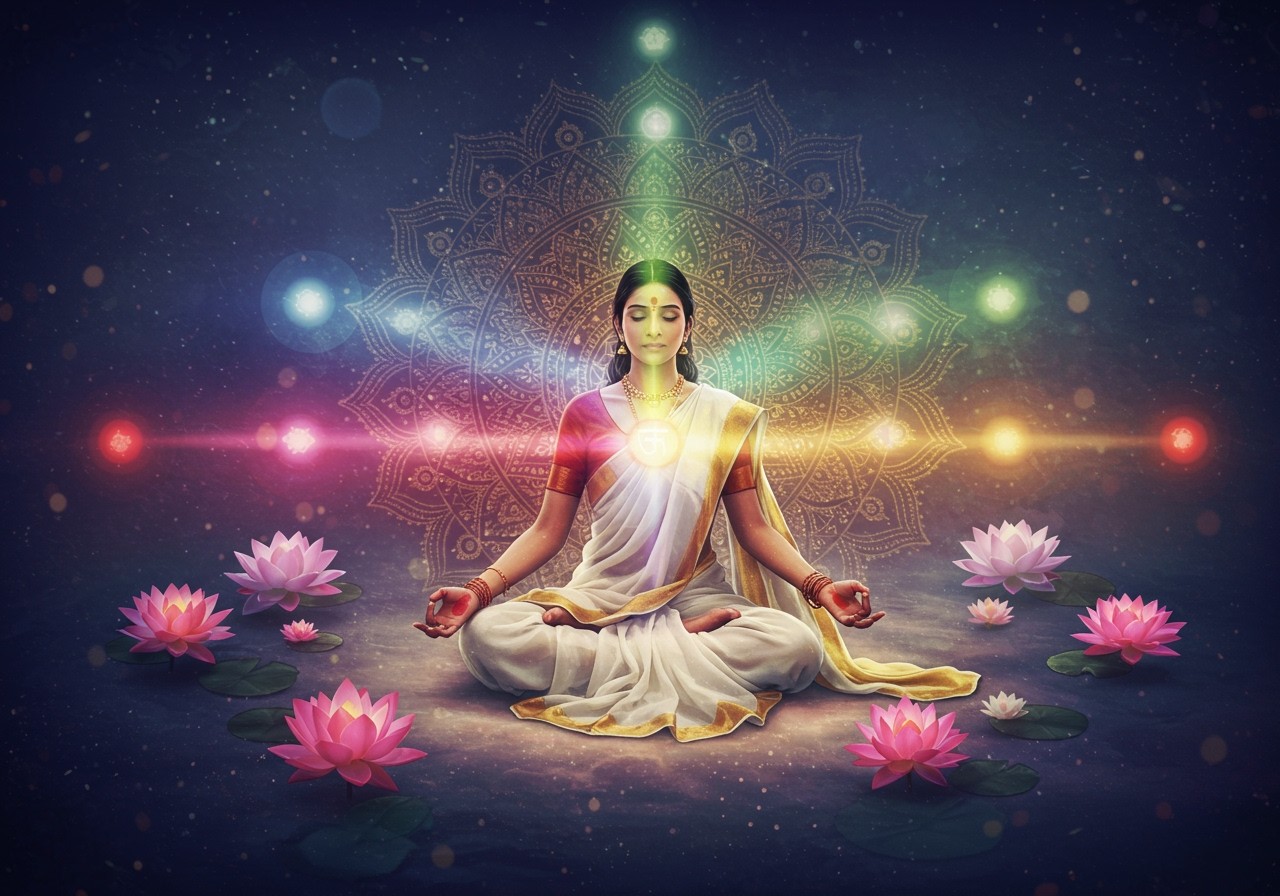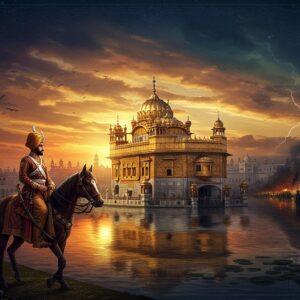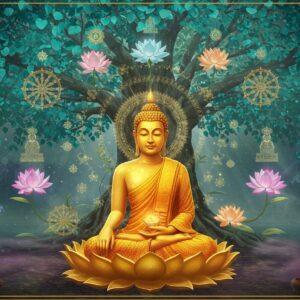
Dive into the captivating world of Indian aesthetics and explore the profound concept of rasa, the essence of artistic expression and its connection to spirituality. In India, art isn’t merely for pleasure; it’s a pathway to the divine, a way to connect with our inner selves and the universe. Rasa, often described as “flavor” or “essence,” is the heart of this experience. It’s the emotional resonance that art evokes, transporting us to a realm of wonder and self-discovery.
Delving into Rasa: Meaning and Significance
What is Rasa? Imagine the sweet taste of mango juice on a hot summer day – that satisfying feeling, that essence, is what rasa refers to in Indian aesthetics. It’s the emotional core of any artistic experience, be it a classical dance performance, a melodious raga, or the intricate carvings on a temple wall. Derived from the ancient Natyashastra, a treatise on performing arts by Bharata Muni, rasa goes beyond mere entertainment. It’s an invitation to a deeper engagement with art, prompting introspection and spiritual reflection.
- Essence and Flavor: Rasa, meaning “juice,” “essence,” or “taste” in Sanskrit, describes the aesthetic flavor that evokes a specific feeling within the audience. Think of it as the soul of the art, the part that truly touches us.
- Beyond Entertainment: Rasa isn’t just about enjoying a performance; it’s about experiencing a different reality, one where wonder and introspection merge. It prompts us to ask deeper questions about ourselves and the world.
For those seeking to deepen their spiritual practice, poojn.in offers a wide array of Puja Kits designed to enhance your connection with the divine.
Rasa’s Influence on Spiritual Experiences
Rasa enhances our spiritual experiences by acting as a bridge between the tangible and the intangible. It allows us to transcend the everyday and connect with something larger than ourselves. Think of the mesmerizing movements of a Bharatanatyam dancer, the soulful notes of a sitar, or the serene atmosphere of a temple – all evoke different rasas, each contributing to a unique spiritual experience.
- Transcendence: Engaging with art through rasa can be a meditative practice, offering moments of pure bliss (ananda) and a glimpse into a higher reality, transforming our consciousness. Imagine the serene feeling of listening to devotional music and the sense of peace it brings.
- A Path to Enlightenment: Many believe that the aesthetic experience of rasa is a path towards enlightenment. It’s about uncovering deeper truths about ourselves and the universe through art and emotional connection.
Rasa in Temple Architecture
The Sacred Spaces: Step into any ancient Indian temple, and you’ll feel the palpable presence of rasa woven into the very fabric of the structure. From the towering gopurams to the intricate carvings, every element is designed to evoke specific emotions and guide the devotee on a spiritual journey. The play of light and shadow, the serene sanctuaries, and the symbolic sculptures all contribute to an immersive experience of the divine.
- Evoking Emotions: Temple architecture masterfully uses rasa. The serene atmosphere of a temple’s inner sanctum naturally evokes a sense of peace (Shanta Rasa). This intentional design helps devotees connect with the divine.
- A Spiritual Atmosphere: The interplay of light, shadow, and intricate carvings creates an immersive spiritual environment within temples. This ambiance facilitates a deeper connection with the sacred, enriching the devotee’s experience.
Discover how the divine feminine is expressed in Indian architecture and spiritual expression.
Rasa and Personal Growth: A Journey of Self-Discovery
The Inner Journey: Engaging with rasa is not just about appreciating art; it’s about embarking on a journey of self-discovery. By experiencing a range of emotions through art, we develop empathy, emotional intelligence, and a deeper understanding of ourselves and the world around us.
- Emotional Resonance: As we engage with art, we experience a range of rasas, from joy to sorrow, courage to fear. This helps us connect with our own emotions and fosters empathy for others.
- Self-Awareness: By understanding the emotions evoked by art, we gain insights into our own emotional landscape. This self-awareness is crucial for personal growth and meaningful connections with others.
To create a sacred space for your personal journey, explore our collection of hand-printed Baran Dala sets at poojn.in. Enhance your spiritual practice with authentic ritual items conveniently delivered to your doorstep.
Continuing the Exploration of Rasa and Spirituality
A Lifelong Journey: The exploration of rasa is a lifelong journey, a continuous unfolding of understanding and connection. It’s about seeking the essence in every experience, appreciating the beauty in the world around us, and finding our own unique path to spiritual growth.
Key Figures and Concepts in Rasa Theory
The Pioneers of Rasa: The concept of rasa has been shaped by brilliant minds throughout history. Let’s explore some of the key figures and ideas that have contributed to our understanding of this profound concept.
- Abhinavagupta: This Kashmiri Shaivite philosopher, who lived around 1000 CE, deepened our understanding of rasa. He saw it not just as an aesthetic experience but as a spiritual gateway to the Self. Embark on a spiritual journey to Chitrakoot and explore the sacred oasis that has inspired seekers for centuries.
- The Natyashastra: This ancient Sanskrit text, attributed to Bharata Muni, is a foundational work on the performing arts. It provides a detailed explanation of rasa theory, laying the groundwork for centuries of artistic and spiritual exploration. For a deeper understanding of spiritual retreats and ashrams, check out our guide on planning your spiritual retreat.
Frequently Asked Questions About Rasa and Spirituality
What is Rasa in Indian aesthetics? Rasa is the emotional essence or flavor evoked by a work of art. It’s the feeling you get when you deeply connect with a piece of music, a dance performance, or a beautiful painting.
How does Rasa impact spiritual experiences? Rasa enhances spiritual experiences by creating a bridge between the physical and the spiritual. It helps us transcend the mundane and connect with something larger than ourselves.
How is Rasa used in temple architecture? Temple architecture utilizes Rasa through its design and symbolism. The serene atmosphere, intricate carvings, and play of light and shadow all evoke specific emotions, guiding the devotee on a spiritual journey. Plan your pilgrimage to Aihole and experience the rich architectural heritage of ancient Indian temples.
Can Rasa help in self-discovery? Yes, Rasa can be a powerful tool for self-discovery. By exploring our emotional responses to art, we gain valuable insights into our own inner world. Poojn.in offers a diverse selection of Hawan Samagri and Kalash Kumkum Roli to support your spiritual practices and self-discovery journey.


